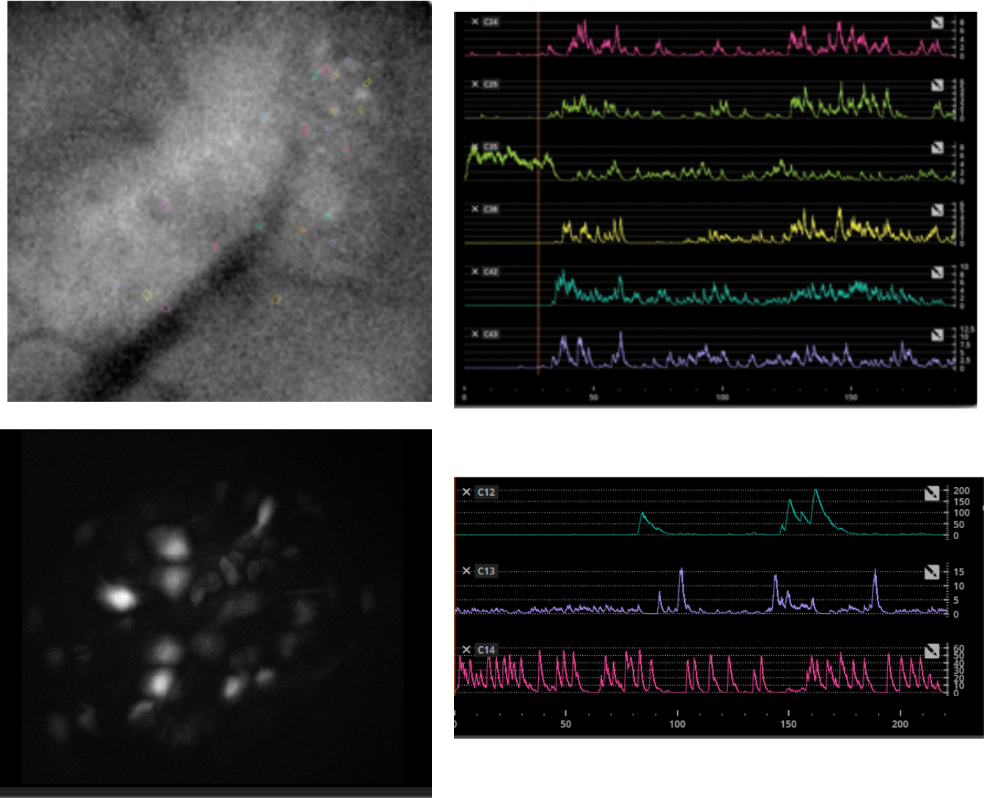Microendoscopic calcium imaging allows to simultaneously record neuronal activity from multiple neurons in freely behaving mice. We use genetically encoded calcium indicators (GEVI) coupled with chronically implanted gradient-index (GRIN) lenses and a miniaturized microscope (miniscope). As a result, we can analyze the activity of several neurons in a given brain region (as the cerebellum) and simultaneously keep track of behavior. The miniscope is light-weight (about 30g) and devised to let the mouse free to interact with the surroundings.
This technique has many advantages. For example, the use of GRIN lenses allows to perform calcium imaging in deep regions in the brain, which is usually a big challenge for imaging methods. Moreover, it allows to monitor neuronal networks activities and correlate them to behavior, with a broad range of possible applications. The system used in the lab is also endowed with an optogenetic stimulation system, allowing to couple calcium imaging and optogenetic manipulation of neuronal activity.

